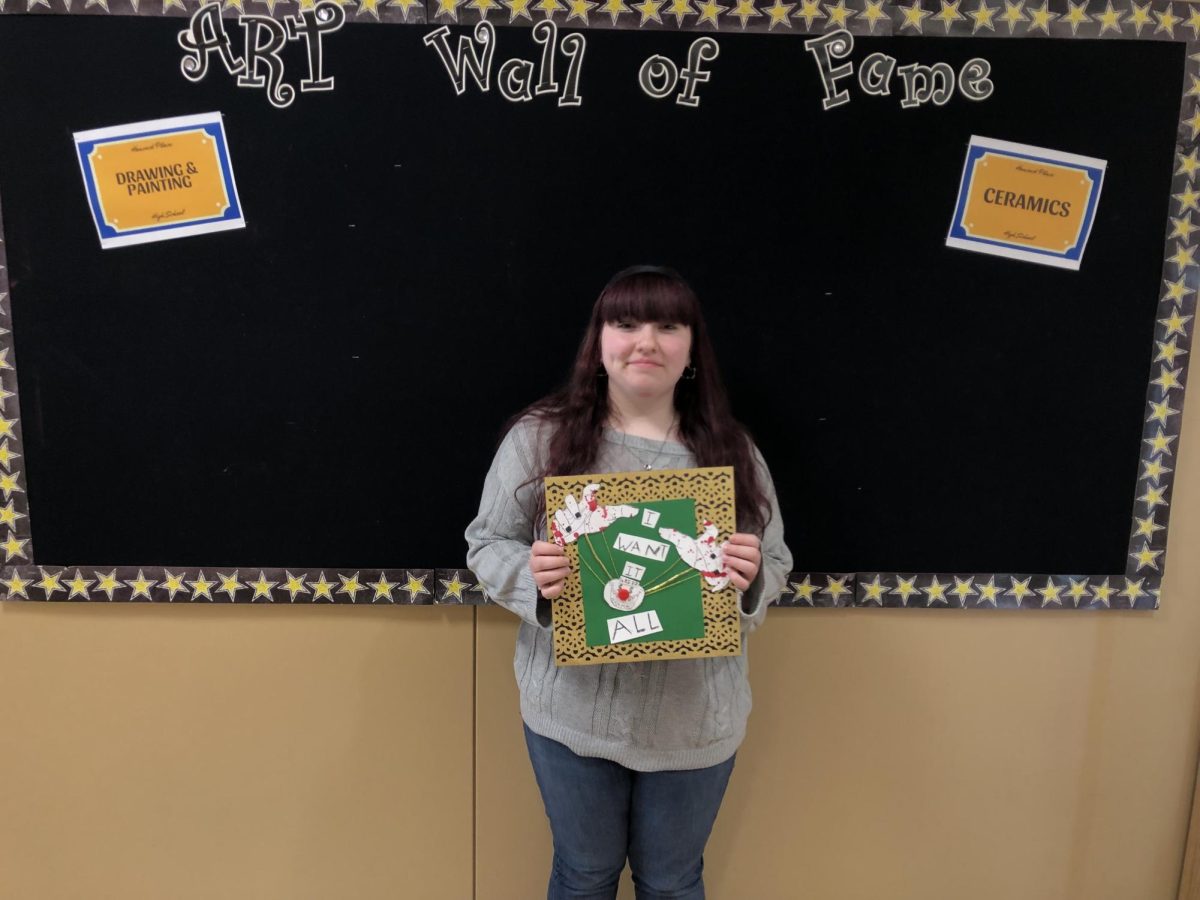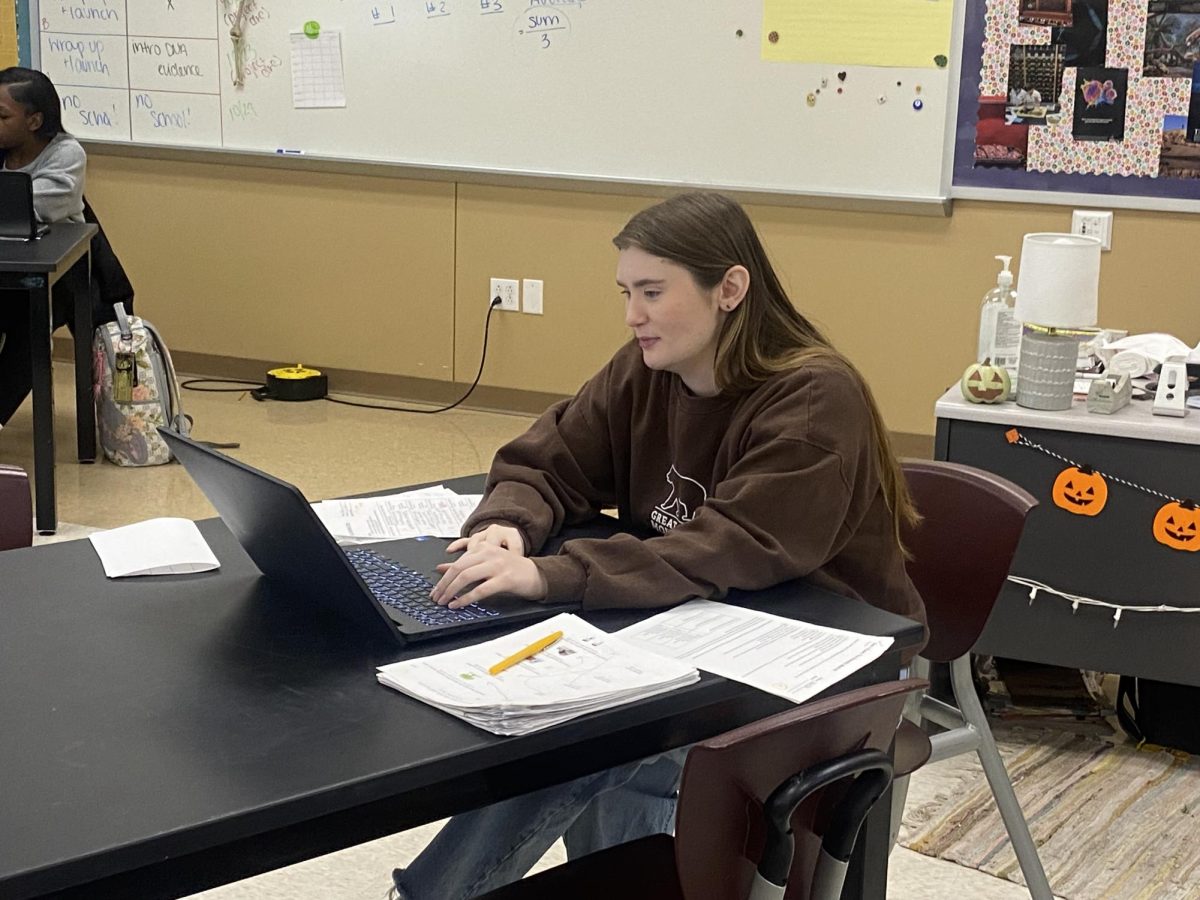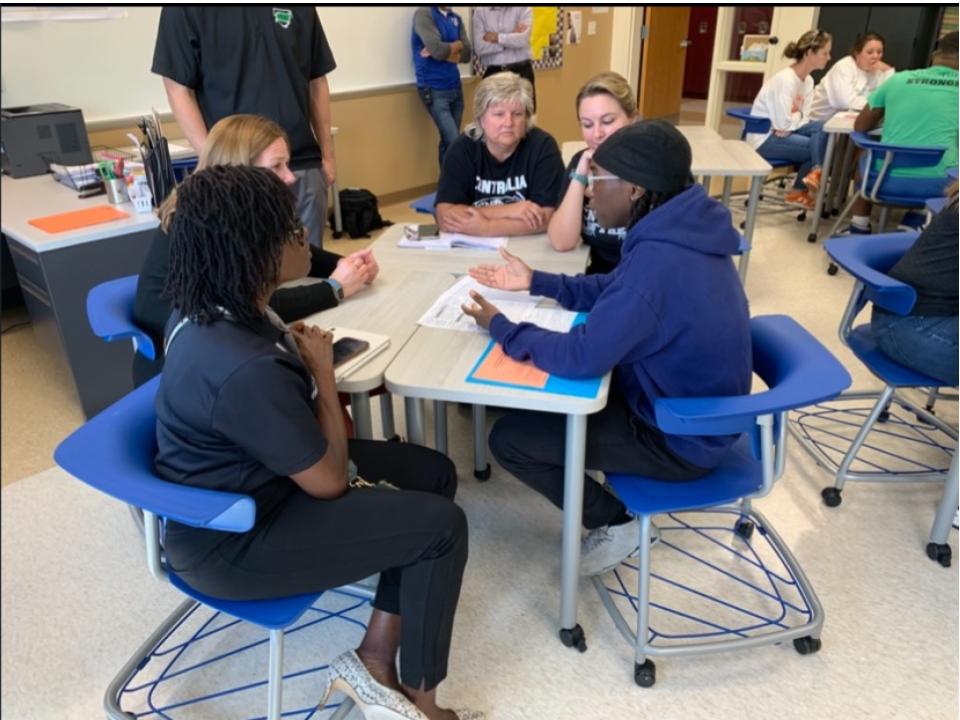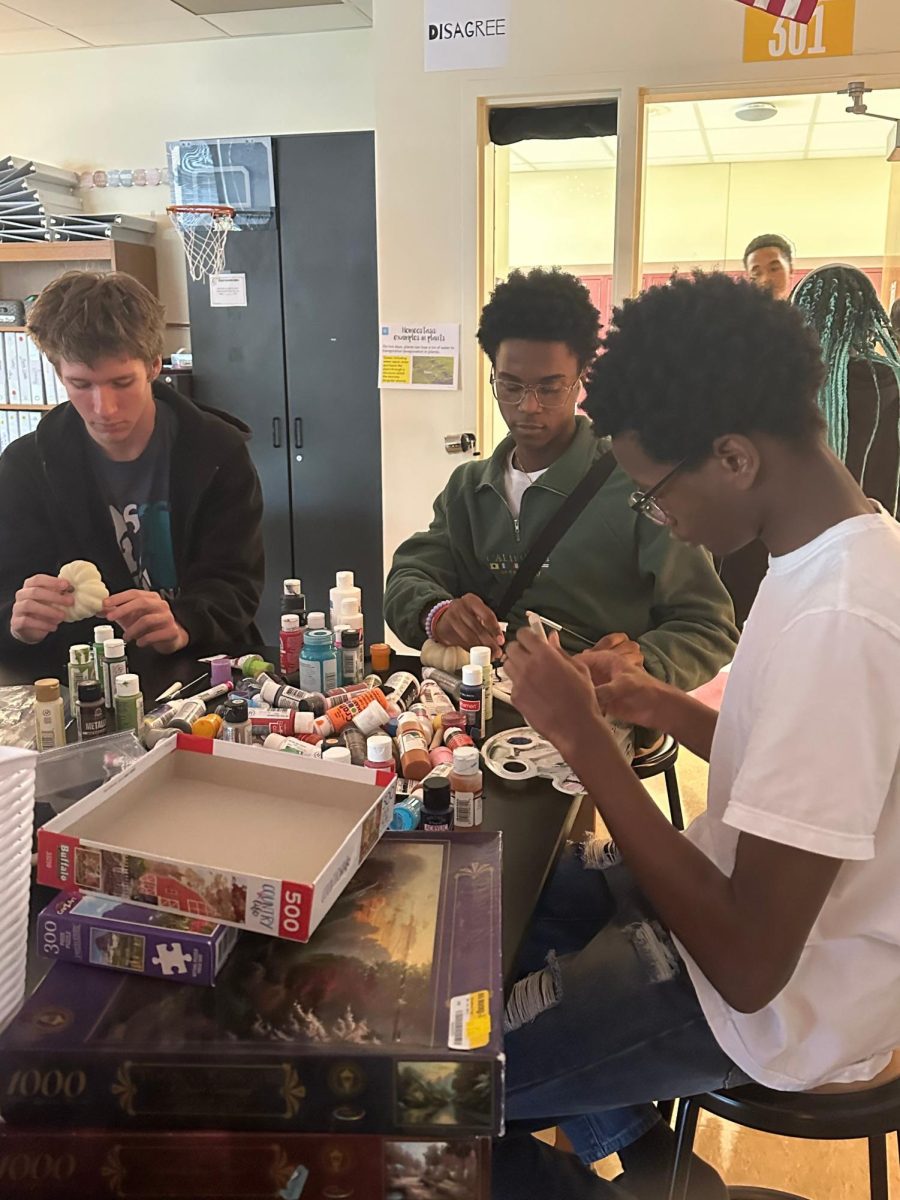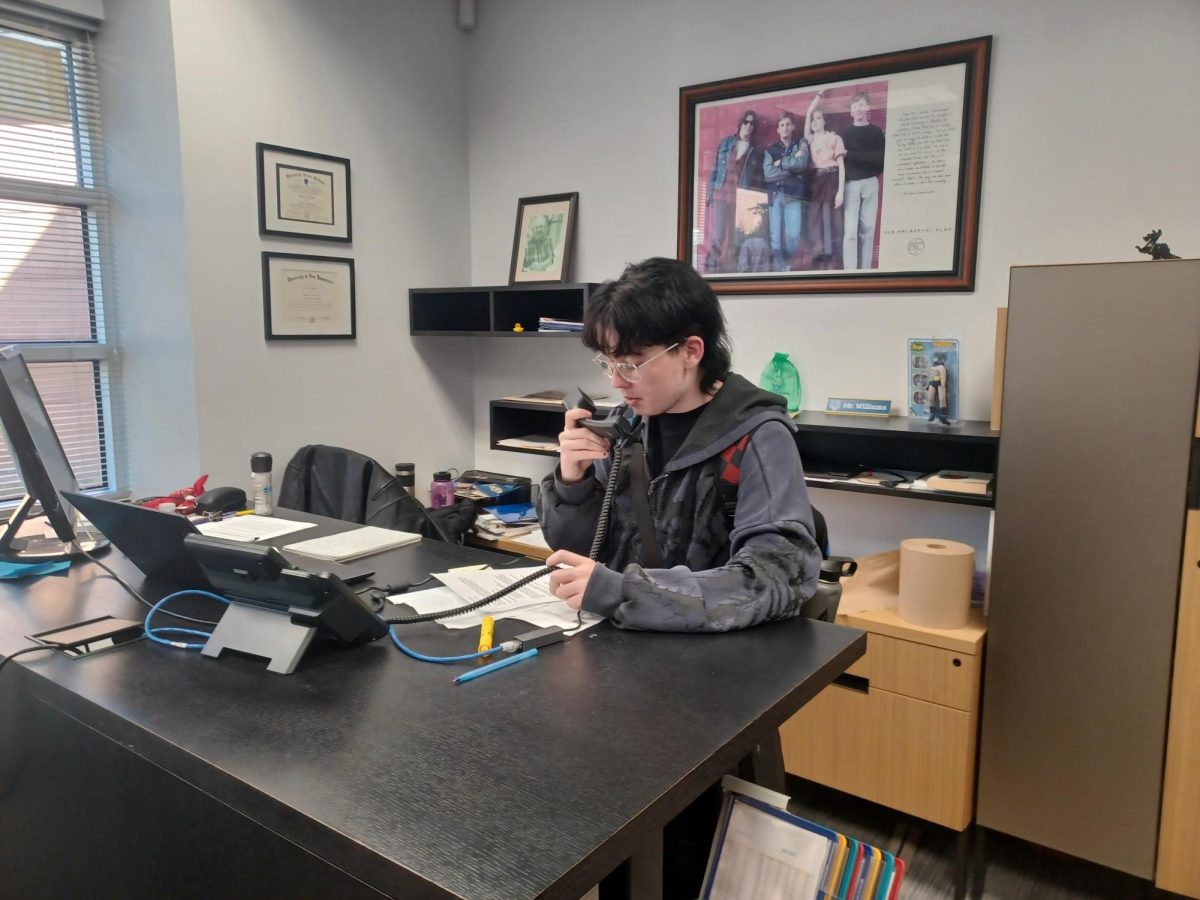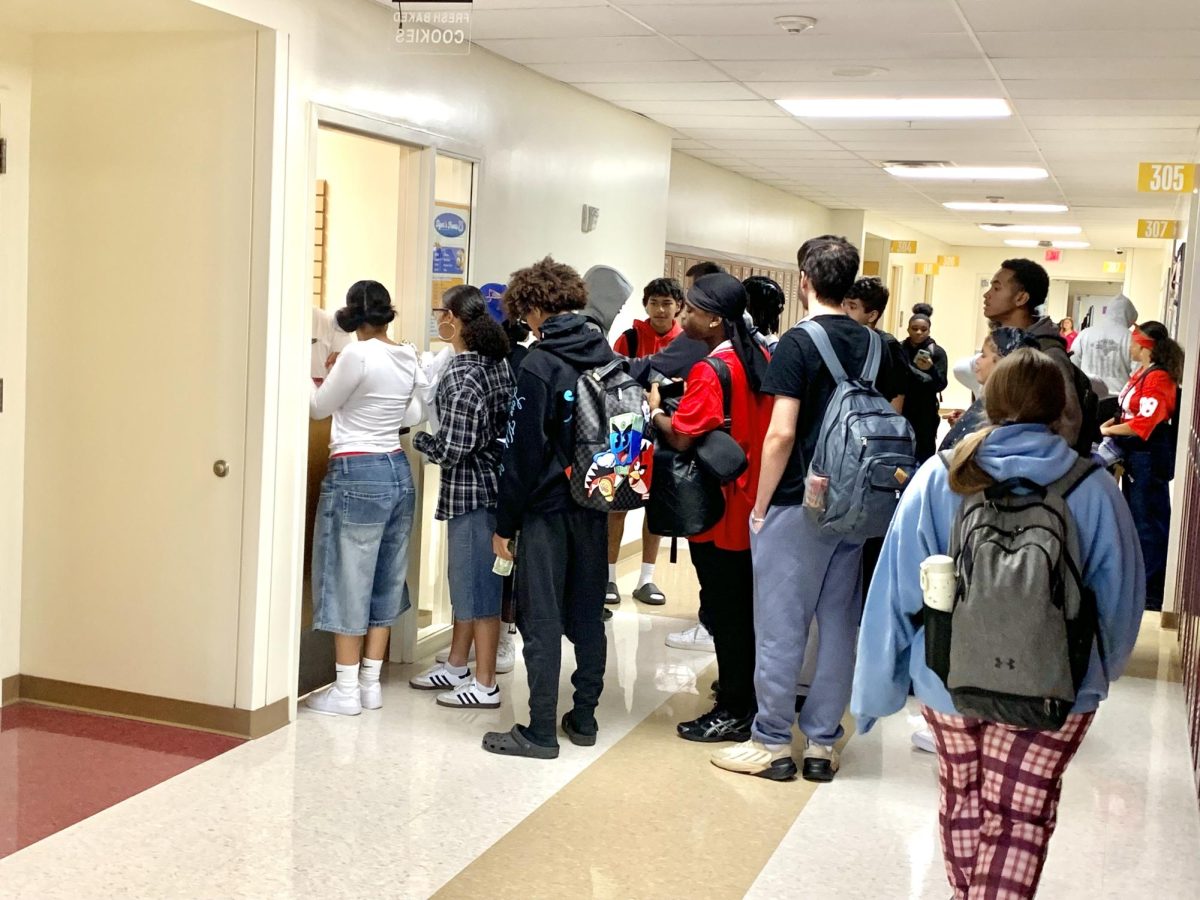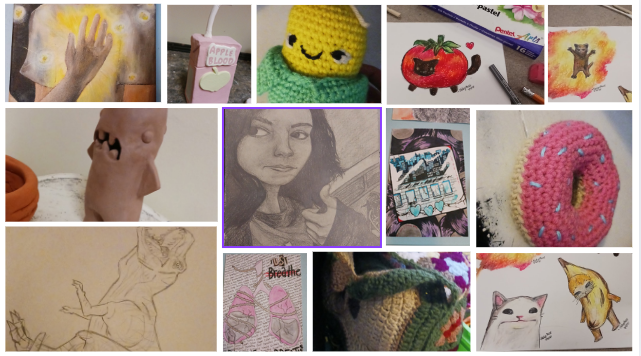For most students, AP classes are full of studying and memorizing. However, for HHS senior Miranda Guss, AP Art is about expressing who she is through her artwork. It’s a class that takes time, creativity, and a lot of effort, but in the end, it’s worth it.
At the beginning of the year, students in AP Art have to choose a theme for their portfolio. The theme connects all 15 art pieces that they must submit at the end of the year.
Some students already know their theme, but others, like Guss, take time to figure it out. She started by looking at different kinds of art and trying to copy them, not to turn in, but to learn more about what style fits her.
That’s when she came up with her theme: 7 Deadly Sins and the 7 Heavenly Virtues
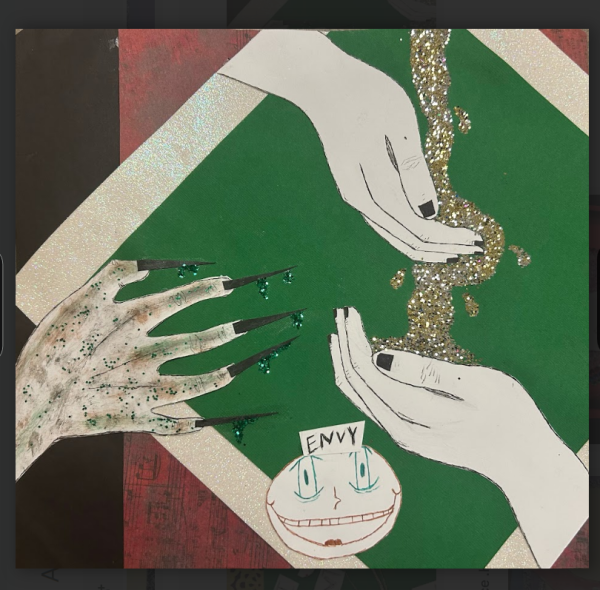
“I’ve always been interested in the idea of religion,” Guss says. “I’m not very religious, but I like how it connects to my art.”
AP Art teacher, Mrs. Laura Leyes-Woods said Guss’s theme is one of the most creative ones in the class. She explores the theme through drawing hands and combining them with found paper/mixed media.
“She had to be creative, expressing the sin or virtue chosen with symbolic colors, textures, and patterns,” Leyes-Woods said.
Guss’s artwork shows both the dark and light sides of human nature. Each piece tells a story, and she uses different art styles to bring them to life.
“My favorite piece is Greed,” Guss says. “I feel like I really nailed it with the green background and the gold symbolizing money. I really like how the hands turned out and how it looks like a puppeteer and how bad greed can get—aka the blood.”
The idea of religion has always caught Guss’s attention, and she used her art to explore it in her own way.
“I’ve always been intrigued by religion, but I’m not a religious person, so this was my way of exploring religion, I guess. I don’t deny the existence of a higher power, I just have never really thought about it or had any particular beliefs. But I still find religion really cool and fascinating.”
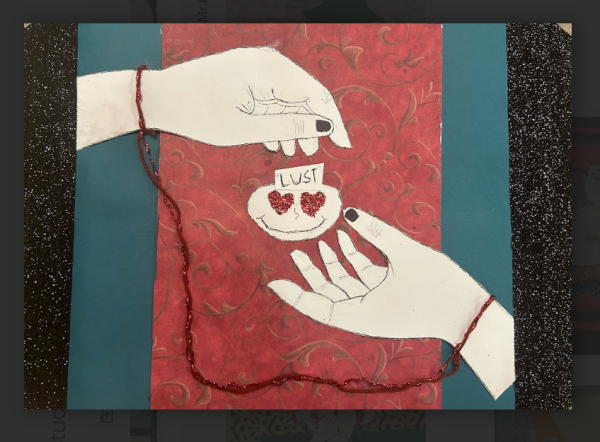
Not every piece turned out exactly how she wanted, though. “The piece that I don’t really like is Lust because I don’t like how the hands turned out,” she said. “In the beginning, I felt like my hand shapes were more rounded, but towards the end they became more sharp, and I like the sharp look. I didn’t have time to go back and redo the hands, so it is what it is.”
Guss has improved a lot during the school year. Mrs. Leyes-Woods says, “Guss has really tapped into her creativity in order to support her theme, and she has gotten to be an expert in drawing realistic hands!”
AP Art is a lot more than just painting. Students have to create 15 original artworks that are 100% their own ideas. They can’t copy anything, and all their pieces have to connect to a single theme. The class starts in August, and students spend the year developing their own signature style.
“It’s not easy,” Guss says. “AP Art is something I really enjoy, but it’s also very stressful, especially when I get ‘art block’.”
To help students stay on track, Mrs. Leyes-Woods holds critiques every two weeks. That’s when students bring in their new artwork, talk about it, get feedback, and write a reflection. They also give suggestions to each other, which helps everyone improve.
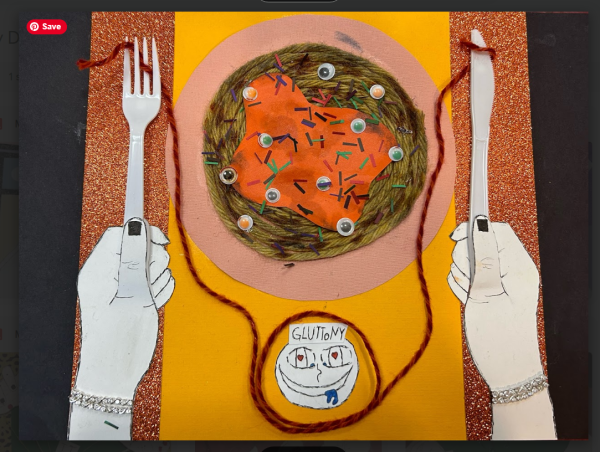
Leyes-Woods is proud of what Guss has accomplished. “It shows how she is creative and a wonderful problem solver. Guss did a great job with her art, and I love how unique all of her pieces are.”
Now that Guss has finished all 15 pieces, she’s uploading them to the AP website and writing a short essay to explain her theme. Everything has to be turned in by early May, and students will find out their scores in July. Getting a 3 or higher is great, since many colleges accept that score for credit.
Once her portfolio is submitted, the pressure is finally off. “After you turn it into the AP board, you can pretty much do what you want,” Guss said.
As a reward for all their hard work, AP Art students get to paint ceiling tiles in May, a special tradition at HHS.
Even though the class is almost over, Guss and many others find many ways to tell their stories, without words, but with art.



